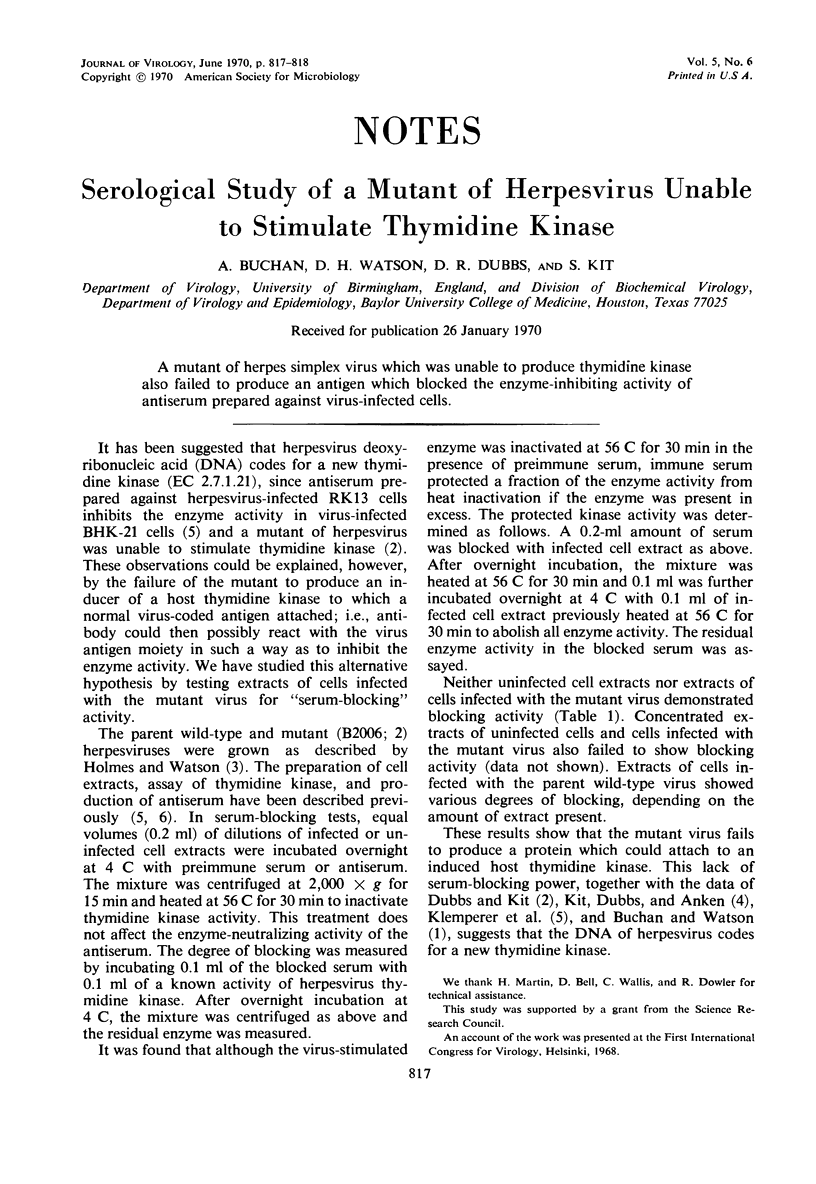Abstract
A mutant of herpes simplex virus which was unable to produce thymidine kinase also failed to produce an antigen which blocked the enzyme-inhibiting activity of antiserum prepared against virus-infected cells.
Full text
PDF

Selected References
These references are in PubMed. This may not be the complete list of references from this article.
- Buchan A., Watson D. H. The immunological specificity of thymidine kinases in cells infected by viruses of the herpes group. J Gen Virol. 1969 Apr;4(3):461–463. doi: 10.1099/0022-1317-4-3-461. [DOI] [PubMed] [Google Scholar]
- DUBBS D. R., KIT S. MUTANT STRAINS OF HERPES SIMPLEX DEFICIENT IN THYMIDINE KINASE-INDUCING ACTIVITY. Virology. 1964 Apr;22:493–502. doi: 10.1016/0042-6822(64)90070-4. [DOI] [PubMed] [Google Scholar]
- HOLMES I. H., WATSON D. H. AN ELECTRON MICROSCOPE STUDY OF THE ATTACHMENT AND PENETRATION OF HERPES VIRUS IN BHK21 CELLS. Virology. 1963 Sep;21:112–123. doi: 10.1016/0042-6822(63)90309-x. [DOI] [PubMed] [Google Scholar]
- Kit S., Dubbs D. R., Anken M. Altered properties of thymidine kinase after infection of mouse fibroblast cells with herpes simplex virus. J Virol. 1967 Feb;1(1):238–240. doi: 10.1128/jvi.1.1.238-240.1967. [DOI] [PMC free article] [PubMed] [Google Scholar]
- Klemperer H. G., Haynes G. R., Shedden W. I., Watson D. H. A virus-specific thymidine kinase in BHK-21 cells infected with herpes simplex virus. Virology. 1967 Jan;31(1):120–128. doi: 10.1016/0042-6822(67)90015-3. [DOI] [PubMed] [Google Scholar]
- Watson D. H. The separation of herpes virus-specific antigens by polyacrylamide gel electrophoresis. J Gen Virol. 1969 Mar;4(2):151–161. doi: 10.1099/0022-1317-4-2-151. [DOI] [PubMed] [Google Scholar]


